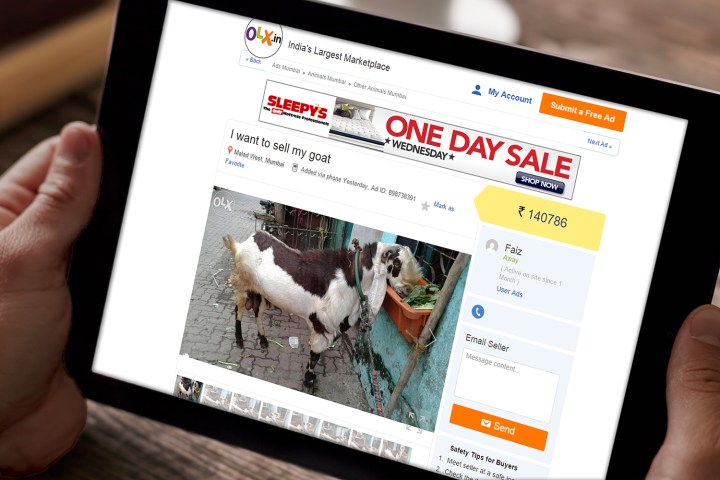
And as it turns out, the Internet is a very welcome environment for goats, and one salesman made a killing (no pun intended) with the successful $2,000 sale of a goat named after Bollywood star Salman Khan. But that wasn’t even the priciest goat — another bearing an “Allah” tattoo went for no less than $10,000.
In a strange juxtaposition of old tradition and new technology, Indian merchants took to OLX, an e-commerce marketplace, where hundreds and hundreds of goats were listed for sale last week. Depending on your price range, you could spend anywhere from a few dollars to $10,000 on one of these animals, all without ever having to actually (or physically, I suppose) go to market.
And while Eid is a particularly popular time to be buying and selling goats, this trend towards digitalized sales of animals is sweeping across India, and is becoming increasingly commonplace as a business practice. Sites like Quikr and OLX offer livestock salesmen and interested buyers an easy platform upon which to show and examine their goods. As farmer Qaiser Khan told the AFP, “I am getting 10 to 15 calls every day” on his livestock. Already, he’s sold six goats via the web in 2015, including one that fetched a price of $3,800. “This is also hassle-free for customers,” Khan adds. “We deliver to their doorstep. Most of my friends are selling their livestock online.”
While Khan is willing to make the trek to deliver his goats to awaiting customers, other merchants are not as accommodating. Vijay Kumar, a student in central India, hoped to make some extra spending money by selling his goat online (completing the listing on his smartphone, his primary source of Internet access). Unfortunately, the only offer he received was from a buyer in Mumbai, located 950 miles away. Sorry, Kumar said. No can do.
With more and more merchants selling a rapidly growing list of products online, it is no surprise that the e-commerce sector in India is expected to hit $137 billion by 2020. So if you’re looking for a goat or just about anything else on the Internet, head on over to India. Just be prepared for some major shipping delays.


